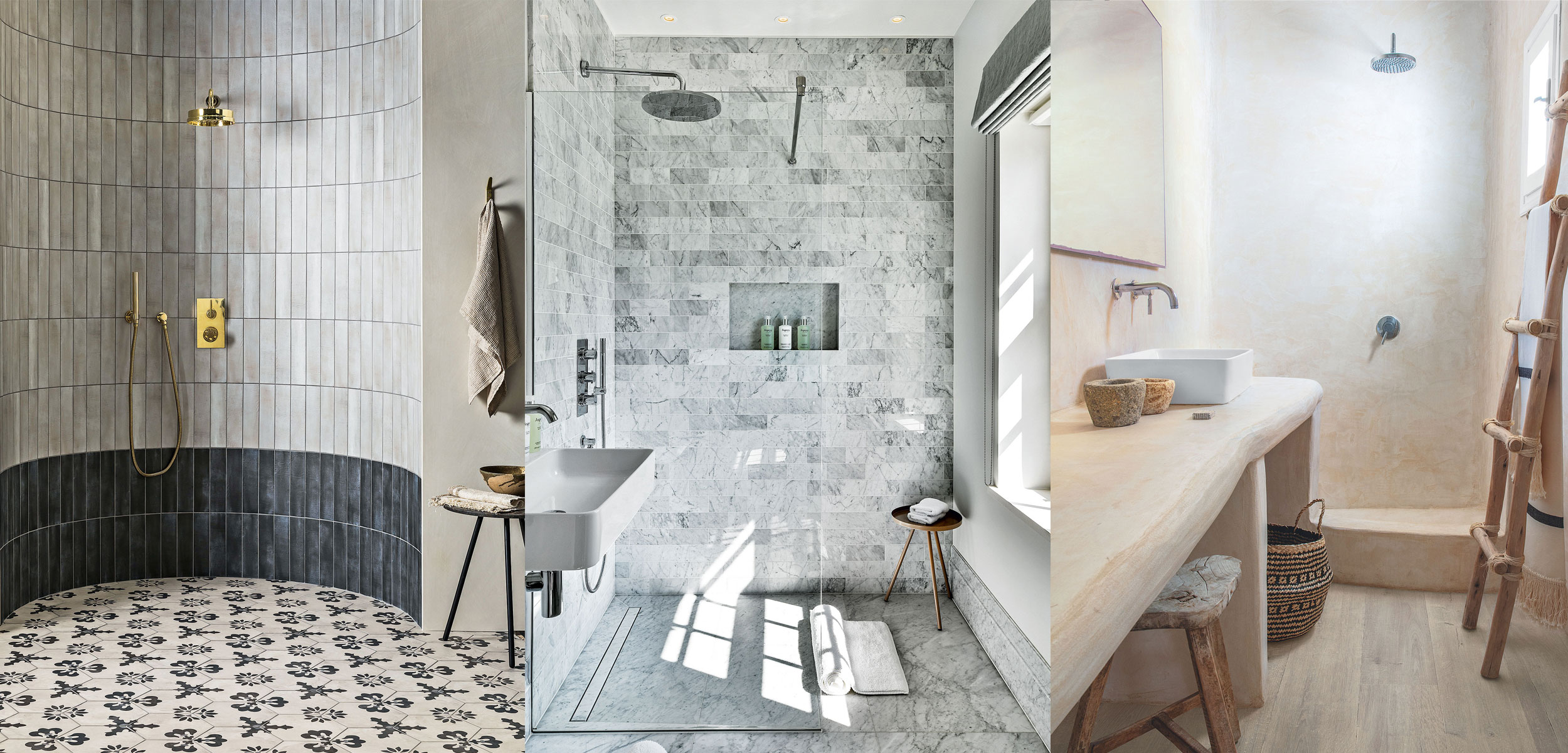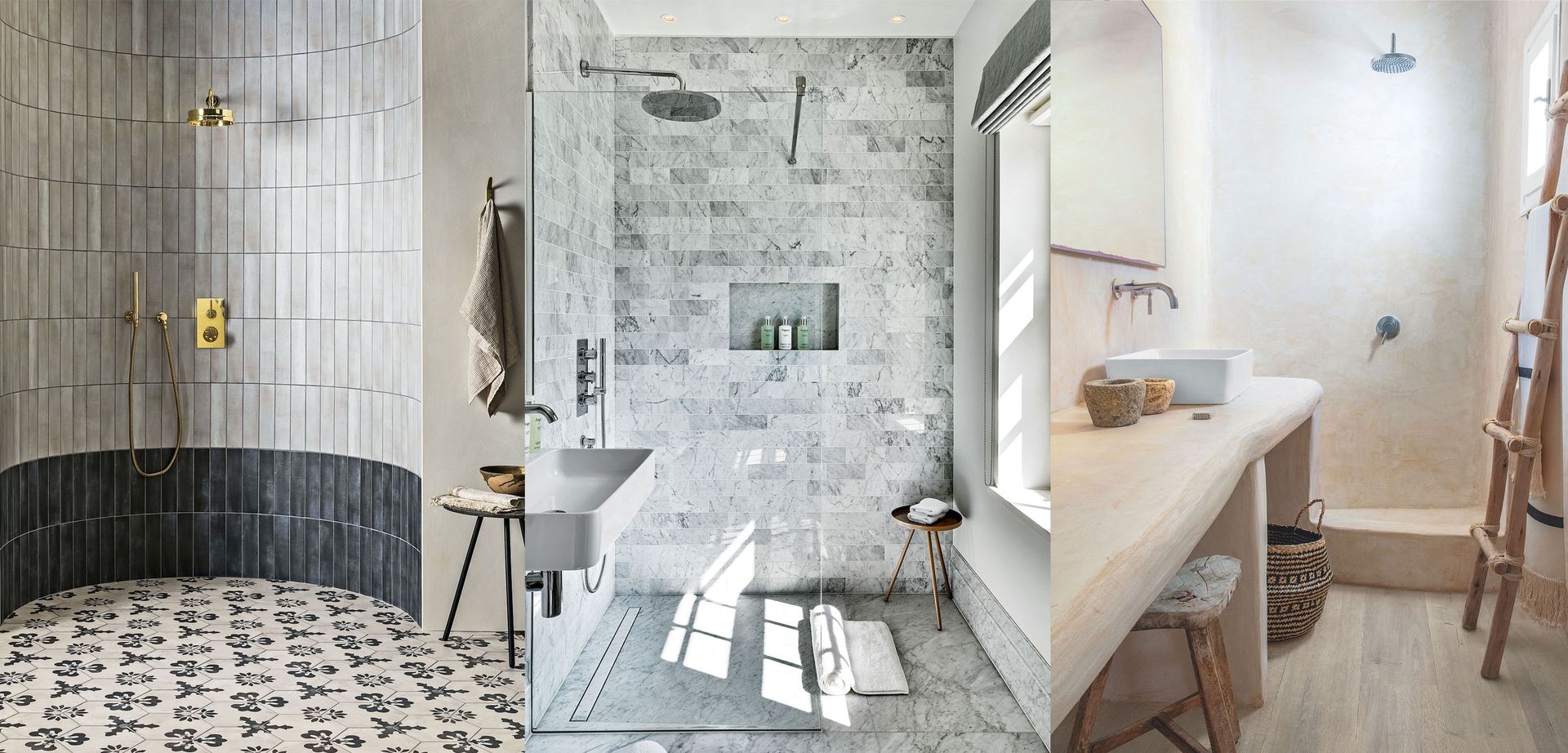Space-Saving Solutions for Small Bathrooms: Wet Room Ideas For Small Bathroom

Transforming a small bathroom into a functional and stylish wet room is a challenge, but with clever design and space-saving techniques, it’s achievable. Wet rooms, with their seamless floor-to-wall design, offer a contemporary and spacious feel, even in limited spaces. This section explores effective strategies for maximizing space in small bathrooms while incorporating a wet room design.
Maximizing Space with Built-in Solutions
Built-in shelves, niches, and storage solutions are essential for maximizing space and functionality in small bathrooms. These integrated elements seamlessly blend into the bathroom’s design, creating a clutter-free and visually appealing environment.
- Built-in Shelves: Built-in shelves offer a versatile storage solution for towels, toiletries, and other bathroom essentials. They can be incorporated into shower walls, vanity units, or even the space above the toilet. The use of glass shelves adds a touch of elegance and enhances the feeling of spaciousness.
- Niches: Niches, recessed areas within the walls, provide discreet storage for shampoos, conditioners, and other shower essentials. They are especially beneficial in wet rooms as they keep items organized and easily accessible without compromising floor space.
- Vanity Units with Storage: Vanity units with built-in drawers and cabinets offer ample storage for toiletries, towels, and other bathroom necessities. Opting for a vanity unit with a floating design further enhances the sense of space and creates a minimalist aesthetic.
Practical Considerations for Wet Room Design

Transforming a small bathroom into a luxurious wet room requires careful planning and attention to practical details. The key to success lies in understanding the intricate process of installation, emphasizing proper drainage and ventilation to prevent moisture buildup, and implementing maintenance strategies to ensure longevity and functionality.
Waterproofing and Drainage
Waterproofing is the foundation of a successful wet room. A comprehensive waterproofing system prevents water from seeping into the underlying structure, ensuring the integrity of your bathroom. A properly sloped floor guides water towards a central drain, crucial for preventing water pooling and potential damage.
- Waterproof Membrane: A waterproof membrane acts as a barrier, preventing water from penetrating the subfloor. Popular choices include liquid-applied membranes, sheet membranes, and tanking systems.
- Floor Slope: The floor should slope towards the drain, creating a gentle incline that directs water towards the drain. A typical slope is 1:80, meaning for every 80mm of horizontal distance, there should be a 1mm drop.
- Drainage System: A reliable drainage system is essential. Consider a floor drain with a large diameter and a high flow rate to efficiently remove water. A grated drain cover allows for easy water flow and prevents debris from clogging the drain.
Ventilation
Proper ventilation is crucial for maintaining a healthy and comfortable wet room environment. Ventilation helps to remove excess moisture, preventing mold growth and mildew formation.
- Extractor Fan: Install an extractor fan with a timer or humidity sensor to automatically remove moisture after showering or bathing. Ensure the fan is powerful enough to adequately ventilate the room.
- Window: If possible, include a window for natural ventilation. This provides a fresh air supply and helps to reduce humidity levels.
- Airbricks: Airbricks are small vents built into walls, allowing for passive ventilation. Consider installing airbricks in areas where moisture is likely to accumulate.
Maintenance, Wet room ideas for small bathroom
Regular maintenance is essential for ensuring the longevity and functionality of your wet room. A few simple steps can help keep your wet room in optimal condition.
- Clean Regularly: Clean the floor, walls, and shower area regularly to prevent the buildup of soap scum, dirt, and mildew. Use a mild cleaner specifically designed for wet room surfaces.
- Check Drainage: Regularly inspect the drain to ensure it is clear and free of debris. Clean the drain as needed to prevent clogging.
- Inspect Waterproofing: Periodically check the waterproofing membrane for any signs of damage or wear. Repair any issues promptly to prevent water leaks.
